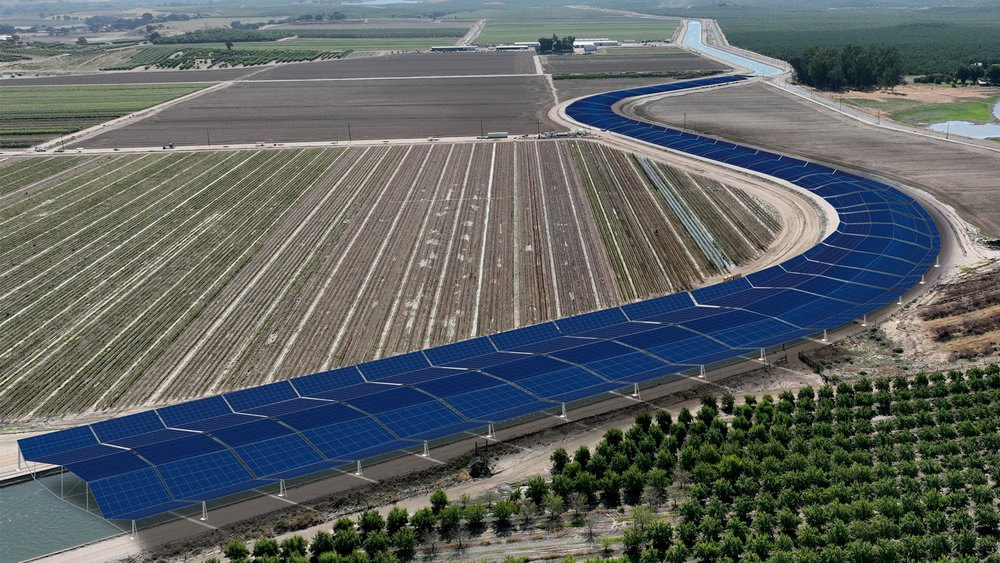A report believes that covering California canals with solar panels could generate enough electricity to power Los Angeles for most of the year.
In the spring of 2015, California’s arid zones were suffering a fourth consecutive year of drought. The governor at the time, Jerry Brown, ordered an unprecedented 25% reduction in household water consumption. The governor set an ambitious goal: that 50% of the state’s energy consumption should come from renewable sources.
Two geniuses, Jordan Harris and Robin Raj, decided to propose a solution that would tackle both water losses and greenhouse gas emissions: the installation of solar panels on irrigation canals. At the time, however, their proposal went unheeded.
Almost ten years later, after several episodes of sweltering heat, record forest fires, a looming crisis on the Colorado River and a certain awakening of awareness in the fight against climate change, their company Solar AquaGrid is about to kick off the first project of canals covered by solar panels in the United States. “Is there a more pressing issue to which we could devote our time?” asks Jordan Harris.
Simply install solar panels on canals in sunny, water-poor regions, where they reduce evaporation and generate electricity.
The University of California gives this idea a boost, estimating that 63 billion gallons, or around 238 billion liters of water, could be saved by covering California’s 6,437 kilometers of canals with solar panels. These could also generate 13 gigawatts of electricity, enough to power the entire city of Los Angeles from January to early October.

However, this is only an estimate, not yet scientifically tested. That’s about to change with the Nexus project in California’s Central Valley.Using the sun as the main energy source, and being on the canals, has long been seen as a two-way solution in California, where affordable land for energy development is as scarce as water. A tempting idea that has long remained a hypothesis.Entrepreneur Jordan Harris co-founded Rock the Vote, a voter registration campaign, in the early 1990s, and Robin Raj organized corporate social responsibility and sustainability campaigns. They knew that people needed a boost, ideally from a trusted source.
They thought that research from a reputable institution might do the trick, and secured funding for the University of California’s Merced-based branch to study the impact of solar-covered canals in California.
Published in 2021, the results of the study are attracting the attention of Governor Gavin Newsom. “Let’s get this up and running and see what we can do,” says Wade Crowfoot, his then Secretary of Natural Resources.
Around the same time, the Turlock Irrigation District, an entity that also supplies electricity, contacted the university. The organization was looking to build a solar project to meet the state’s goal of 100% renewable energy by 2045. With land prices very high, building on existing infrastructure proved attractive, especially as the shadow cast by the panels on the canals could reduce weed growth, thus cutting maintenance costs.
“Until the scientific study was published, we had never really seen what the associated benefits would be,” explains Josh Weimer, head of external affairs for the district.
The state committed $20 million (€18 million) in public funds, transforming the pilot project into a tripartite collaboration between the private, public and university sectors. Some 2.6 kilometers of canals between 20 and 110 feet wide will be covered with solar panels located between 5 and 15 feet above the ground.
The University of Merced team will study the effects of these panels, from evaporation to water quality, explains Brandi McKuin, lead researcher on the study. “We need to get to the heart of these issues before making recommendations on how to generalize this practice.”



Comment here